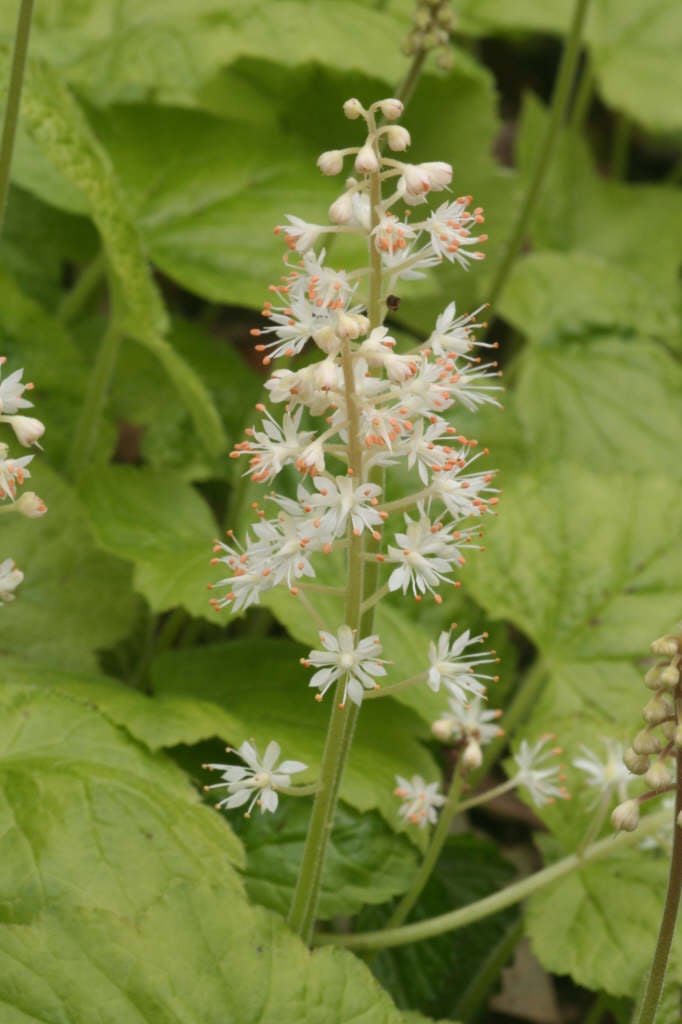Tiarella wherryi
Wherry's foam flower
A compact, herbaceous perennial to 25cm in height, forming a clump of deeply 3-lobed, purple-tinted leaves with narrow, erect racemes of small, white or pinkish flowers from late spring
Size
Ultimate height
0.1–0.5 metresTime to ultimate height
2–5 yearsUltimate spread
0.1–0.5 metresGrowing conditions
Moisture
Moist but well–drained, Poorly–drainedpH
Acid, Alkaline, NeutralColour & scent
| Stem | Flower | Foliage | Fruit | |
| Spring | Pink White | Green Purple | ||
|---|---|---|---|---|
| Summer | Pink White | Green Purple | ||
| Autumn | Green Purple | |||
| Winter |
Position
- Full sun
- Partial shade
Aspect
North–facing or West–facing or East–facing
Exposure
Sheltered Hardiness
H5Botanical details
- Family
- Saxifragaceae
- Native to GB / Ireland
- No
- Foliage
- Deciduous
- Habit
- Clump forming
- Genus
Tiarella are rhizomatous herbaceous perennials forming a clump of rounded, more or less palmately lobed leaves, with very small, star-shaped flowers in terminal panicles or racemes on erect stems
- Name status
Correct
- Plant range
- SE North America
How to grow
Cultivation
Ideally grow in cool, moist, humus-rich soil in partial or full shade but can tolerate a wide range of soils and can spread freely. Protect from excessive winter wet
Propagation
Propagate by seed in pots in a cold frame as soon as seed is ripe or in spring. Propagate by division in spring
Suggested planting locations and garden types
- Cottage and informal garden
- Rock garden
- Ground cover
- Flower borders and beds
- Underplanting of roses and shrubs
Pruning
No pruning required
Pests
May be susceptible to slugs
Diseases
Generally disease-free
Get involved
The Royal Horticultural Society is the UK’s leading gardening charity. We aim to enrich everyone’s life through plants, and make the UK a greener and more beautiful place.

